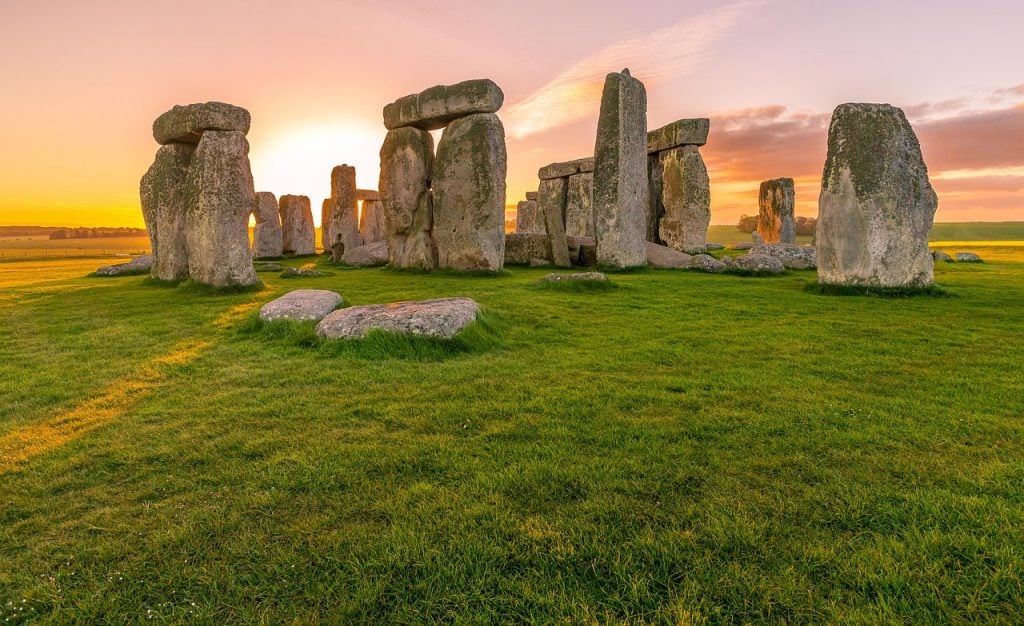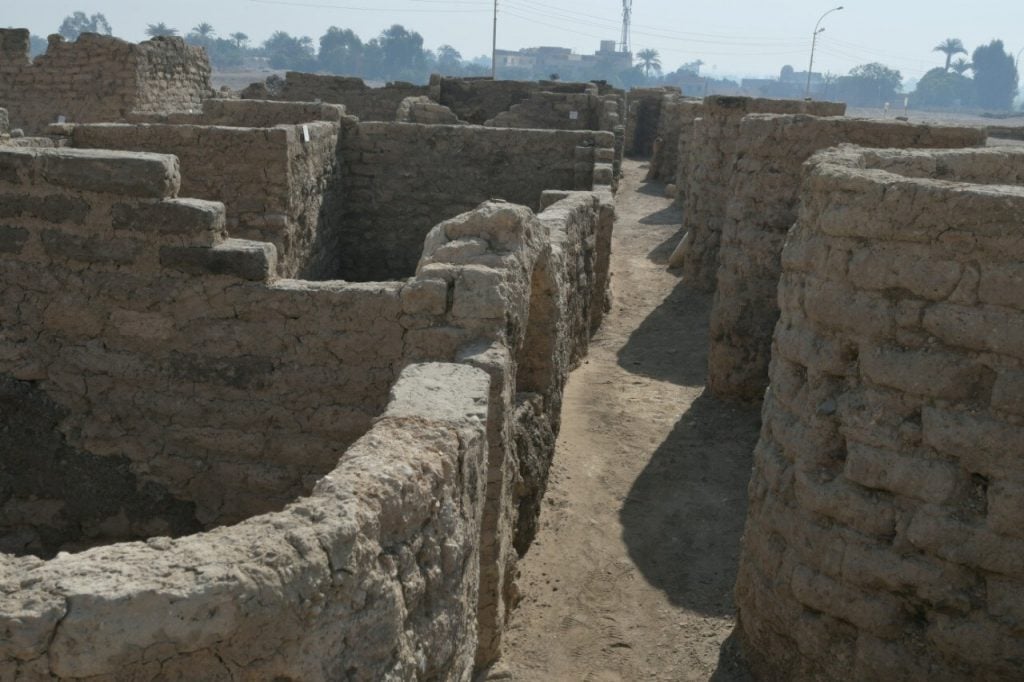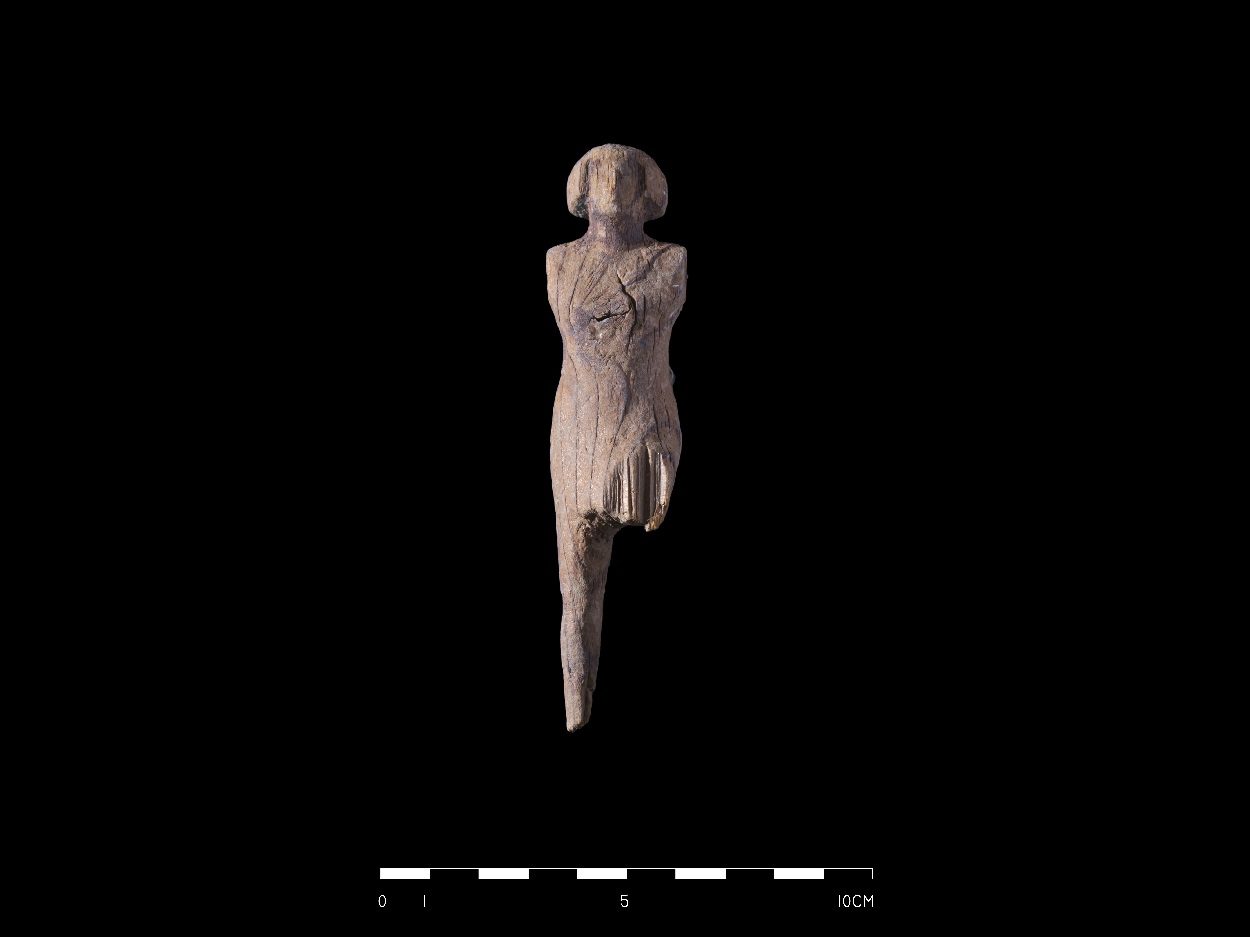As always, archaeology news takes us around the globe and throughout the ages, from the earliest days of human history through to the contemporary era. Here are our picks for the 2021 archaeological stories worth revisiting.
Stonehenge Revelations

Stonehenge at sunrise in 2015. Photo by Freesally, public domain.
The ancient circle of stone monoliths on the U.K.’s Salisbury Plain is one of history’s most enduring mysteries. But while we may never fully understand this ancient structure, experts are learning more and more about it each year.
Thanks in no small part to the late Robert Phillips, a diamond cutter who made repairs to a fallen stone at the site in 1958, we now know that the massive monoliths are made from a nearly indestructible matrix of interlocking quartz crystals—which is why the monument has stood for millennia. Phillips drilled a three-and-a-half foot core sample during his work, which he was allowed to keep as a souvenir. He returned it in 2019, allowing scientists to conduct valuable testing on the stones, which are now protected under English heritage law and cannot be sampled.
This year also saw archaeologists discover a former stone circle in Wales that closely matches the dimensions of Stonehenge’s inner ring. That suggests that the site’s inner stone circle was originally erected 175 miles away and moved to Salisbury Plain—and carbon dating shows it was built 400 years before Stonehenge proper. If this all seems too unbelievable to be true, just wait: it perfectly matches a Stonehenge legend that Merlin stole the monument and moved it to England.
Original Flavor Pompeii—and a New Version in Egypt

The lost city discovered by archaeologists near Luxor in Egypt. Photo by Zahi Hawass, courtesy
of the Center for Egyptology.
Do the discoveries ever seem to stop in Pompeii? A newly excavated thermopolium, a kind of Roman fast food restaurant, began welcoming visitors this summer. Archaeologists were able to identify the space in part because it was decorated with frescoes featuring some popular ingredients in Pompeii cuisine, such as roosters.
Other Pompeii finds this year included an intact chariot, slaves’ quarters, and evidence of thriving Greek theater scene.
But Pompeii isn’t the only ancient city found nearly intact. In fact, a smaller “mini” Pompeii was found hidden beneath vines in Verona by construction workers. And in Egypt, another wellspring of ancient treasures, 2021 saw what’s being hailed as the nation’s most significant discovery since Howard Carter uncovered King Tut’s golden tomb nearly a century ago: the abandoned city of Luxor.
The city was a royal metropolis outside the city of Thebes built by Tutankhamun’s grandfather, King Amenhotep III. His son, Akhenaten, appears to have abandoned the city when he started a new religion worshipping only the sun god, Aten. READ MORE...
Do the discoveries ever seem to stop in Pompeii? A newly excavated thermopolium, a kind of Roman fast food restaurant, began welcoming visitors this summer. Archaeologists were able to identify the space in part because it was decorated with frescoes featuring some popular ingredients in Pompeii cuisine, such as roosters.
Other Pompeii finds this year included an intact chariot, slaves’ quarters, and evidence of thriving Greek theater scene.
But Pompeii isn’t the only ancient city found nearly intact. In fact, a smaller “mini” Pompeii was found hidden beneath vines in Verona by construction workers. And in Egypt, another wellspring of ancient treasures, 2021 saw what’s being hailed as the nation’s most significant discovery since Howard Carter uncovered King Tut’s golden tomb nearly a century ago: the abandoned city of Luxor.
The city was a royal metropolis outside the city of Thebes built by Tutankhamun’s grandfather, King Amenhotep III. His son, Akhenaten, appears to have abandoned the city when he started a new religion worshipping only the sun god, Aten. READ MORE...

 Wooden figurine discovered in the tomb – Image Credit : M. Jawornicki
Wooden figurine discovered in the tomb – Image Credit : M. Jawornicki